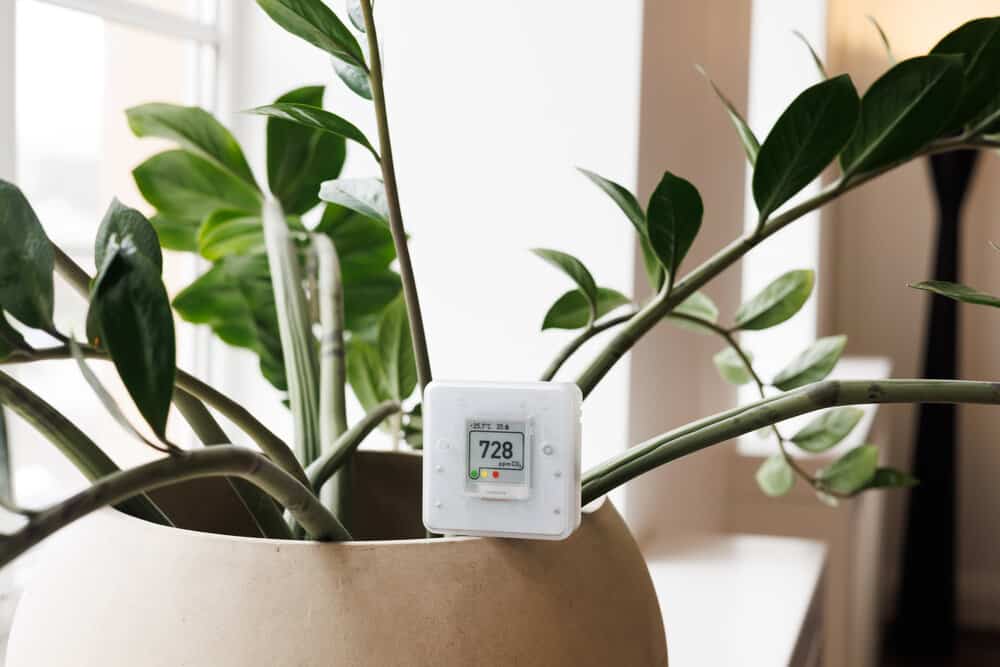
Why Indoor Air Quality Is Important
Americans spend about 90 percent of their time indoors. Around a quarter of the population spends almost all their entire day inside.
These statistics have put the spotlight on the importance of indoor air quality. If we spend so much time inside, we need to be concerned about the air we’re breathing in these indoor environments.
These same surveys also show many Americans feel indoor air is as good as the air outside. Is it, though? It’s a question worth asking.
In this guide, we’ll take a look at why you need to pay attention to the air quality in your home or other places you frequent. We’ll also go over how you can check air quality and the steps you can take to improve indoor air quality.
How Clean Is The Air In Your Home
We tend to think of the air inside our homes and other buildings as less polluted, but it often isn’t. In fact, some studies say indoor air can actually be many times more polluted than outdoor air.
Part of the problem is upgraded codes, which have made houses less prone to leaks. While this is good in many ways, it also means it’s harder to get fresh air into your house. In the past, outdoor air could seep into your hose with more ease.
Nowadays, houses are more airtight, which means outdoor air stays out and indoor air stays in. This can mean contaminants hang around longer. This is especially true if the home isn’t properly ventilated.
The location of your home also matters. If you live near a highway, your home may have higher levels of pollution thanks to vehicle emissions.
Homes in the Pacific Northwest may also have worse air quality. The weather may cause you to keep windows shut, which limits natural ventilation. This can lead to decreased air quality in your home.
If you live in a hot climate and have an air conditioning unit, you may also have decreased air quality. This is for the same reason that you’ll keep the windows and doors closed while the air conditioning is on.
The Indoor Generation Demonstrates The Importance Of Indoor Air Quality
From the statistics, it’s clear Americans are spending more time inside than ever before. Many people feel indoor environments have air that is as good as outdoor ones. Outside, you might worry about your neighbor’s cigarette smoke or the emissions from cars.
There are actually many different sources of pollution indoors. Some of them include:
- Combustion pollutants from appliances like water heaters, space heaters, and dryers
- Radon, a carcinogenic gas that leaks in through cracks and improper seals
- Secondhand smoke, if someone in your home is a smoker
- Cleaning products, which produce odors and chemicals
- Building materials, whether recently installed or deteriorating due to age
- Biological contaminants, such as dust mites and mold spores
Some research also suggests viruses like the flu thrive on dry air. The air in most homes has reduced humidity, especially during the winter months. This situation leads to more bacteria and viruses in the air you breathe.
Airborne allergens and molds can irritate almost anyone. Sensitive individuals may be more affected.
As you can see, the air inside your home may not be as fresh and clean as you’d like to think.
Potential Health Effects Of Poor Indoor Air Quality
The concern with airborne pollutants in indoor spaces is their health effects. Some pollutants have immediate effects. Others may increase your risk of certain conditions or diseases after repeated exposure.
Some pollutants can cause irritation, with symptoms like a cold. You might experience:
- Headaches
- Fatigue
- Irritated eyes
- Irritation in the respiratory tract, such as cough or sneezing
- Allergic reactions
- Sinus infections
Some pollutants may also affect your ability to concentrate and think clearly. Children may be more affected because they breathe more air in proportion to their body size.
Some pollutants are potentially fatal. Carbon monoxide, for example, can cause people to suffocate. It’s important to have a monitoring system to help you detect dangerous gases like this.
Radon is a leading cause of lung cancer in the United States. Repeated exposure to radon over time increases your risk of developing cancer. Other pollutants can increase the risk of heart disease.
Testing & Monitoring Air Quality Indoors
As you can see, the quality of the air in your home has a huge effect on your health and your quality of life. The air also may not be as clean as you thought it was.
This is why it’s so important to test and check the quality of air in your home. As Americans spend more and more time inside, we need to make sure air quality meets specific standards. Whether it’s where you live, play, or work, you want the air in your indoor space to be as fresh and clean as possible.
One thing you can do is set up a test to establish a baseline for your home. A team of professionals will conduct a series of tests to identify pollutants in the air in your home.
This expert team can identify hazardous levels of any contaminants present. They can then advise you on how to reduce these immediately.
Even if they’re not at hazardous levels, there are likely still some pollutants in your air. Levels can change over time. Installing an indoor air quality monitor is a good first step to improving the air quality in home environments.
The monitoring system will warn you if levels of particular pollutants become hazardous. With the right monitoring system, you can also keep an eye on the levels of specific contaminants. With this information, you can then take steps to improve air quality.
Check Out Your Ventilation System
Testing and monitoring are the first steps to improving indoor air quality. With information about the levels and kinds of pollutants in the air, you can decide what changes to make.
Inadequate ventilation is often one reason for poor air quality in a home. You may want to check on your ventilation system and make upgrades to it.
Fresh air ventilation systems are particularly helpful. They remove the stale, used air, which may be contaminated, and replace it with fresh air from the outdoors.
This kind of system keeps the air circulating in your house. This helps to improve ventilation.
Many newer homes are being designed with HVAC systems, which provide advanced ventilation. They assist with air exchange.
If you live in a cold climate, you can consider ventilation systems designed to lower energy use. A heat recovery system heats incoming air using the warmth of outgoing air. This happens in the ventilator core, and incoming and outgoing stale air do not mix.
An energy recovery system works in a similar way, but it also helps you keep some humidity in your air. This could help reduce biological contaminants, like the flu virus.
You can also look to increase the natural ventilation in your home by opening up windows and doors.
Air Cleaners Can Help
Another option you have for improving air quality at home is an air cleaning system. There are many different choices available. Some are designed to handle a room or two, while larger models can clean the air for your entire house.
Air cleaners can be useful for dealing with non-gaseous pollutants. They filter these pollutants out of the air. Smaller models may not be able to contend with high levels of contaminants.
Air cleaners aren’t always the most effective way to deal with poor indoor air quality, but they can help. Consider the source of pollution and the level of pollution when you choose an air cleaner. This will help you pick the right size and model.
Reduce Pollutants In Your Home
Sometimes, the most effective way to deal with a contaminant is to remove its source. If your water heater is improperly vented, it may put combustion pollutants into the air. Fixing the ventilation or replacing the unit may remove the pollution altogether.
There are some instances where it won’t be possible to remove or reduce the source of pollution. A house built near a busy freeway can’t do much to reduce the soot pollution from passing traffic. Instead, other measures like a better ventilation system and air cleaners can help.
Call In The Experts
Now you understand the importance of indoor air quality. You might still have more questions.
You might want to find out the quality of your air. You might also want to know about the best options to improve air quality in your home.
If you’re concerned about the air quality in your home, get in touch with us. We can help you test the air, as well as choose the right solutions for your home.
The air you breathe is important. Our team can help you make sure you get the best quality air where you live and play. Give us a call at 206-202-9499.
